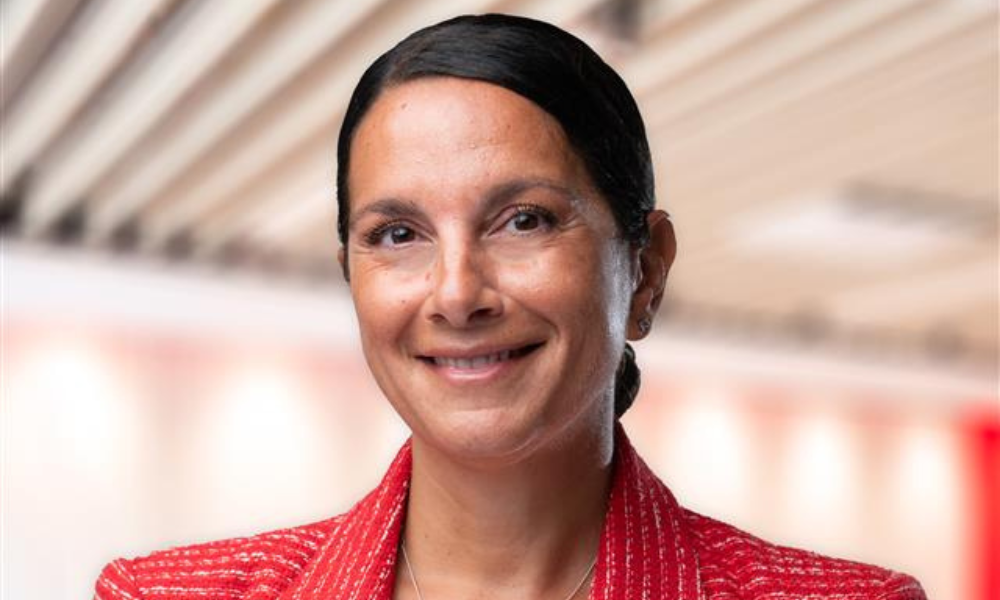
Pina Guercio, VP of Global HR, explains why consistency, culture and connection are what really make people stay

Even with a global workforce of more than 40,000, Air Canada made a point of meeting more than 1,000 employees face to face to ask what they really needed. The listenig strategy was part of a program, called ECX, designed to enhance the employee experience.
What came out of the program was ten key initiatives, including needs for development tools that worked across the organization.These priorities served as a clear roadmap for Air Canada to enhance the employee experience in meaningful ways.
For Pina Guercio, Vice President of Global Human Resources, long-term loyalty doesn’t come from perks alone—it starts with feeling seen, supported and proud to be part of something bigger than a job.
“People love the company and that’s why people stay,” Guercio says. “When you feel heard and when you feel supported, when you’re given the tools to show up at your best every day, when you feel respected and valued, you want to stay.”
She’s seen that dynamic unfold firsthand. Guercio has spent 26 years with the airline, helping to shape the experience of a workforce that stretches across countries, time zones and job functions. Consistency, access and pride shape her work, which is especially critical when building a unified employee experience for a workforce where many are rarely behind a desk.
“It doesn’t matter where our employees are located or what function they hold in the organization,” she says. “But one thing for sure has been very clear—if we want to have a consistent approach in supporting our employees, it has to start from our leaders.”
That consistency is built on more than policy—it’s reinforced through constant feedback and a shared sense of purpose. Guercio rejects the idea that employees from different regions want vastly different things. She points to alignment across the company’s strategic priorities as the reason it works.
“Our people aren’t different,” she says. “People come to work because they want to do a good job, they want to be supported, they want to grow, and we really are connecting these dots.”
Driving this kind of consistency across a global workforce requires more than good intentions—it takes structured programs and committed leadership. Clarity of purpose led to a company-wide leadership development program now in its second year, spanning geographies and departments.
“Every single people manager is going through the same program,” she explains. “We want to make sure that, whether you’re in the air, a mechanic, a ramp agent, when you see a leader, you know that that’s an Air Canada leader.”
Leadership is only one part of the equation. The HR team also emphasizes inclusivity and accessibility, adapting tools and programs to support a workforce that spans continents and cultures.
“We have a program called Unlock the Best in You, and we make sure that from a foundational perspective it’s identical. And then if there are little tweaks that we need to do from a regional perspective, we do it,” Guercio says. “That common language is very important.”
Alongside leadership, technology plays a major role in bridging gaps.
“We use tools so an employee can choose to listen to a presentation or training in Italian, in Spanish, in their language,” she says. “So, we’re really trying to make sure that we meet employees where they are.”
The push to prepare employees for automation and digital transformation is gaining momentum too. For Guercio, that means investing in tools that develop future-ready skills and wellness initiatives that support resilience. As a result, Air Canada recently began rolling out an online learning solution to help employees build new skills.
“Our goal is always to ensure that we have to set up our people for success; nothing happens without our people. Nothing,” she says. “Our role is to enable our people to succeed so our business can too.”
That human-first lens will only become more critical as technologies like AI become more prevalent.
“The need to bring that human connection and perspective to the conversation is going to be even more important,” she says. “The most impactful way to shape organizational culture is to shape behavior. And that starts from the top,”
But all of it—the development, the tools, the programs—only works because of a shared commitment to purpose.
“Employees at Air Canada have an immense amount of pride working for the organization,” Guercio says. “I always say we have the privilege of representing this beautiful Maple Leaf; I could be in any airport across the world, but when I’m waiting at the gate and I see that aircraft, I automatically feel like home."